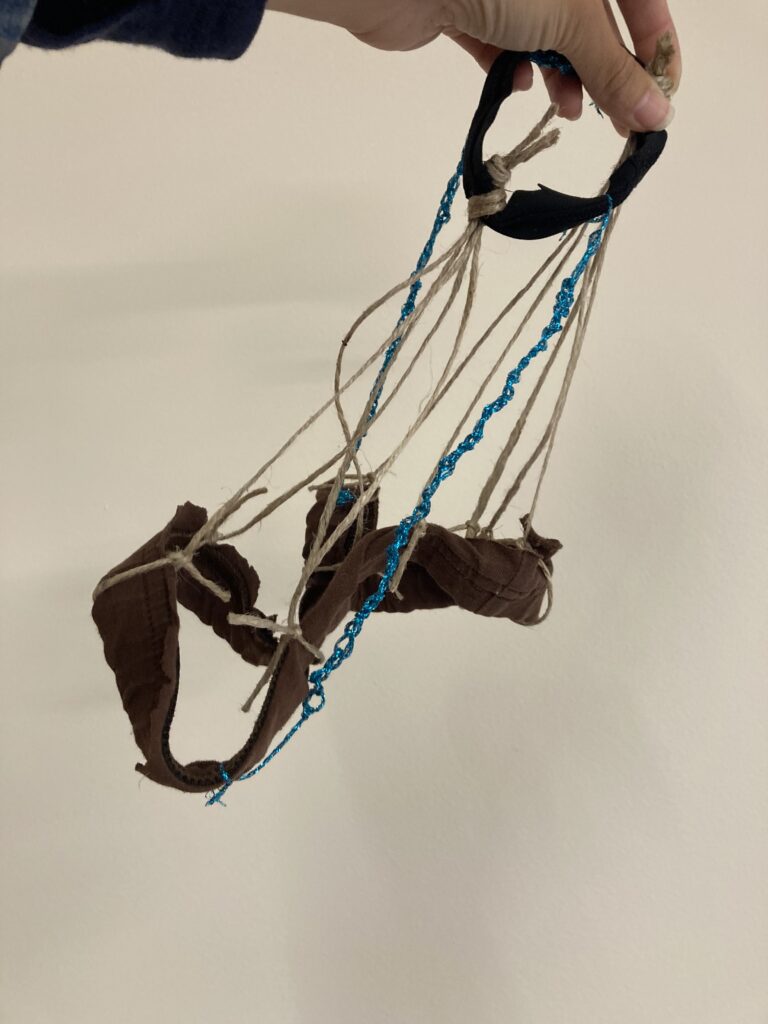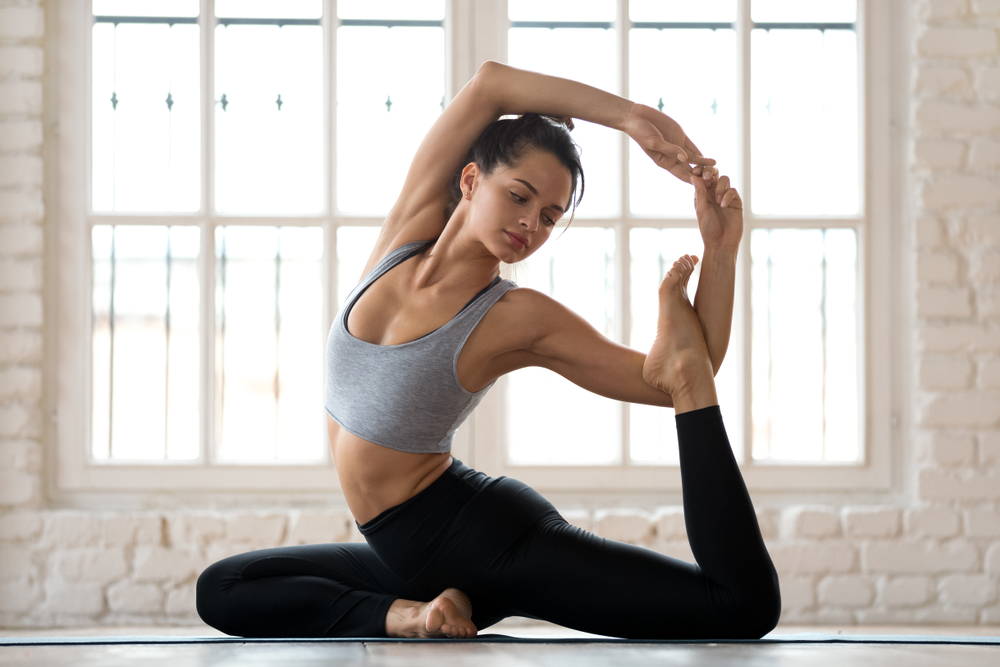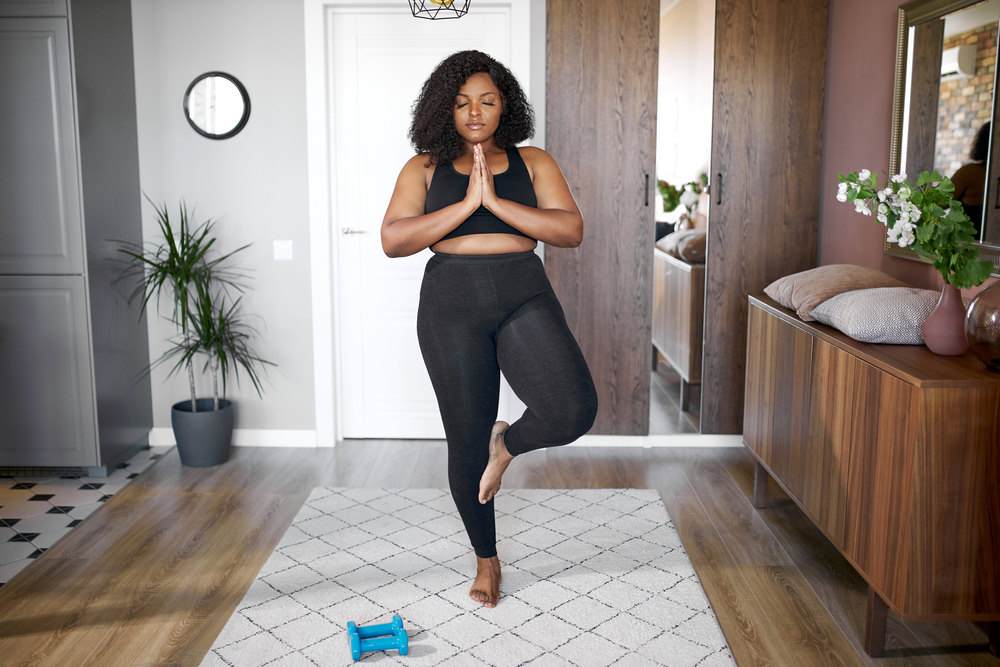Raise a hand – or better yet, a leg – if you own a pair of yoga pants. Marketed largely to women in Western countries, these items began to appear after yoga became a globalized mainstream practice in the 1990s. Yoga pants are so successful because they are deeply invested in the utopian promise – and perhaps the neoliberal trap – of middle-class feminine flexibility.
Yoga pants are socially versatile in many Western countries. We see them at the shops, the school pickup line, and the office in addition to the yoga studio. They accompany women throughout the day, moving from domestic work to paid labour to fitness, beauty and wellbeing pursuits. Yoga pants discipline curves and bulges into sleek and intentional shapes. They mix selective ideals of beauty with the moral high ground of the person who keeps fit. Such social flexibility is key to their appeal.
But yoga pants’ ability to stretch in many directions speaks to the diverse demands placed on those wearers’ bodies and lives. Desk jobs raise health risks that prompt the need for a “third shift” of fitness work in people’s discretionary time. Schools end before many workdays do, leaving parents to figure out how to address that gap. Social media perpetuates myths of ageless beauty that can inspire anxiety about the value of one’s own looks in competitive markets.
As a response to these multiplying challenges, the flexibility of the yoga pant ironically attests to rigid social structures that are beyond the control of individuals.
How might we perceive and question such rigidities, even as we enjoy the most comfortable clothes many of us have ever owned? In a workshop at the Australian National University, participants and I cut up four pairs of yoga pants. Deconstructing the pants and looking at them through a magnifying glass, we reflected on the contradictory forces of globalised neoliberal life to which yoga pants so powerfully respond. Getting so literal with fabrics, textures, and threads allowed us to explore their hidden metaphors.
As we sliced scissors down seams, we reflected on the history of the word “flexible” in English. For many years, “flexibility” was considered mainly a property of physical materials. Only later did it offer a way of thinking about the capacity of the human body. In the late nineteenth century, advertisements in colonial India promised readers the hope of becoming more flexible – by taking a pill. Military training helped to popularize the idea of bodily stretches instead.

A photo of a remade yoga pant from the workshop. Picture: Supplied
By the early twentieth century, as yoga scholars have shown, flexibility became seen as an ideal physical goal suitable for women. Unlike muscular strength, flexibility could be compatible with feminine norms of grace and beauty without upsetting gender hierarchies. Yoga pants inherit this history as they weave together flexibility with femininity.
Such gendered norms surrounding the yoga pant also affect pressures on men. Participants in the workshop reflected that comfortable, stretchy, close-fitting tights marked to men are usually presented in relation to endurance sports, such as cycling, and sold as high-performance gear. Men are only supposed to wear these clothes “while they are actually working out,” one participant noted.
This difference in the gendering of social norms suggests that men may be protected from some of the strains of needing to be endlessly flexible to the demands of the world around them. But this marketing difference also hints at how men may be pressured to maintain the illusion of boundaries across their own complex social roles.

Shameem writes that yoga pants have become a way to underscore gender hierarchies and impose on women the idea that they should be flexible (as oppose to muscular). As you can see with this image, this notion is reinforced if you search for “yoga pants” in a stock photo library! Picture: Shutterstock
Looking at textile fibers up close, we reflected on the unending social expectations that pile up on yoga pants, and by implication, on those of us who wear them.
“It’s not enough anymore for the pants just to be stretchy,” one participant said. “They have to do more, like wick moisture.” “There are yoga pants that suppress farts,” another participant noted.
Unlike rigid fabrics, where changes in the wearer’s body become obvious (your pants feel too tight), yoga pants conceal the transformations of time. Similarly, many of us who wear such pants may feel that each year brings heightened expectations for us to “do more,” whether in our work lives, our social communities, our political actions, our family roles, or our personal care. It’s no wonder that we look for a piece of clothing to relieve some of that burden.
As highly engineered textiles, yoga pants of the current moment appear designed to foster the illusion of a human body that never sweats, passes gas, or changes shape. This superhuman body reflects the fantasy of neoliberal self-perfection: the individual who can endlessly meet the challenges created by capitalist structures of work, racialized forms of inequality, and gendered divisions of labor.
As we cut yoga pants into squares, triangles, tubes, and ribbons, we speculated on how we might transform the yoga pant and its meanings. One participant upcycled a pant leg into a gorgeous glove; another made a mask. Others experimented with texture and tone by weaving wall hangings with twine and string.
Participants speculated on how the yoga pant could be reimagined to serve the needs of more diverse communities, such as transgendered wearers.
They explored how the pant could become a place of artistic play, removed from the need to constantly produce an idealized norm. The yoga pant became a blank canvas for colourful drawing, a tapestry embroidered with bright thread, and a place of new, surprising, social connection.
These experiments remind us that the practice of yoga, a diverse constellation of mental and physical practices tracing important roots to South Asia, has long been a practice of inquiry. In many parts of its history, yoga has been used to develop a closer understanding of the invisible structures that shape observable reality. Today, postural yoga often invites practitioners to expand their powers of observation by noticing physical or mental sensations they take for granted. Perhaps practicing yoga, no matter what we wear, can also help us notice and critique the pressures of the rigid social structures that lead us to buy those pants.
- Please note: The picture at top is a stock photo from Shutterstock.
Shameem Black is Associate Professor of Gender, Media and Cultural Studies in the School of Culture, History and Language at the Australian National University. Her book on the cultural politics of yoga, Flexible India, is forthcoming from Columbia University Press.





